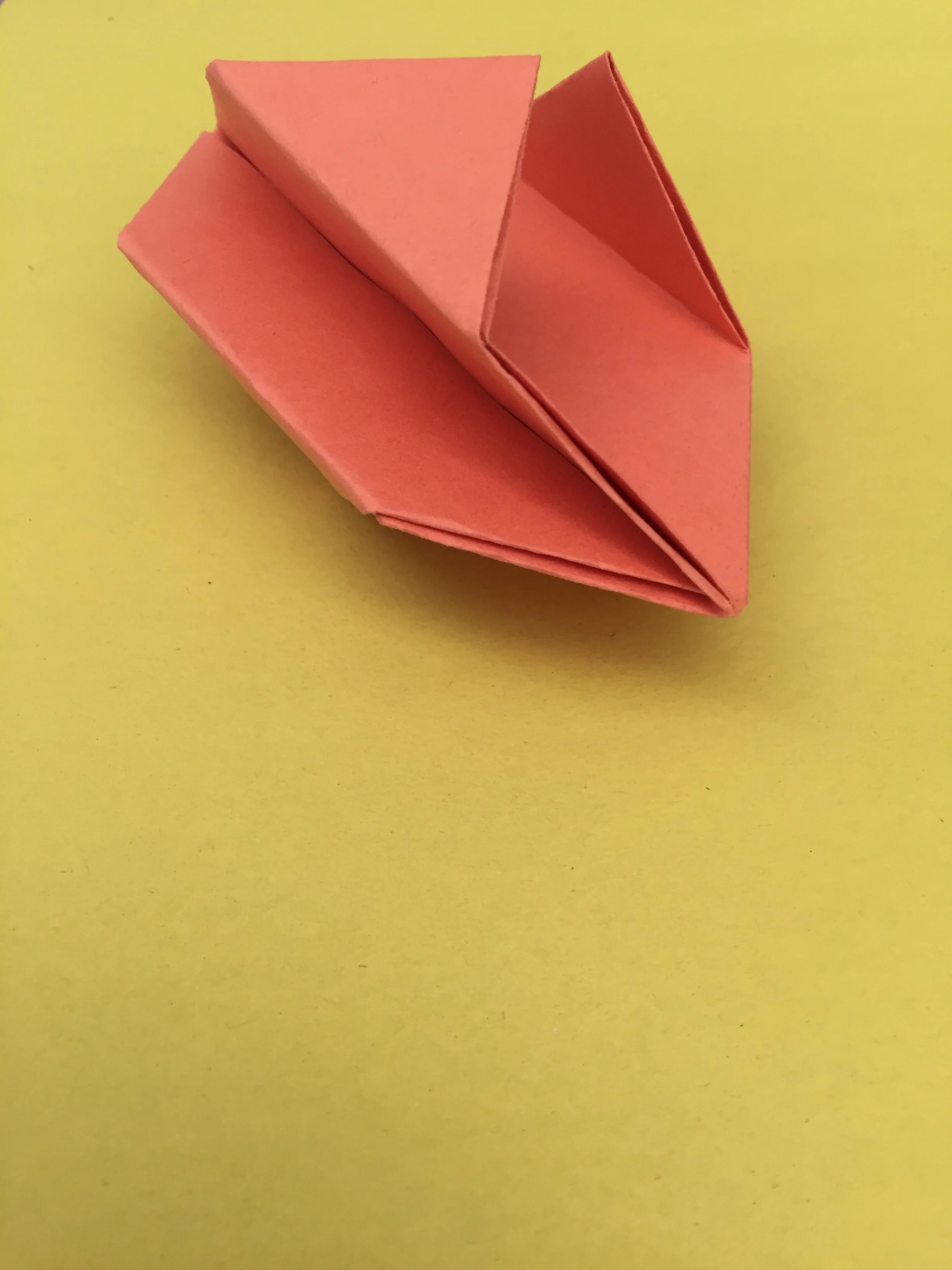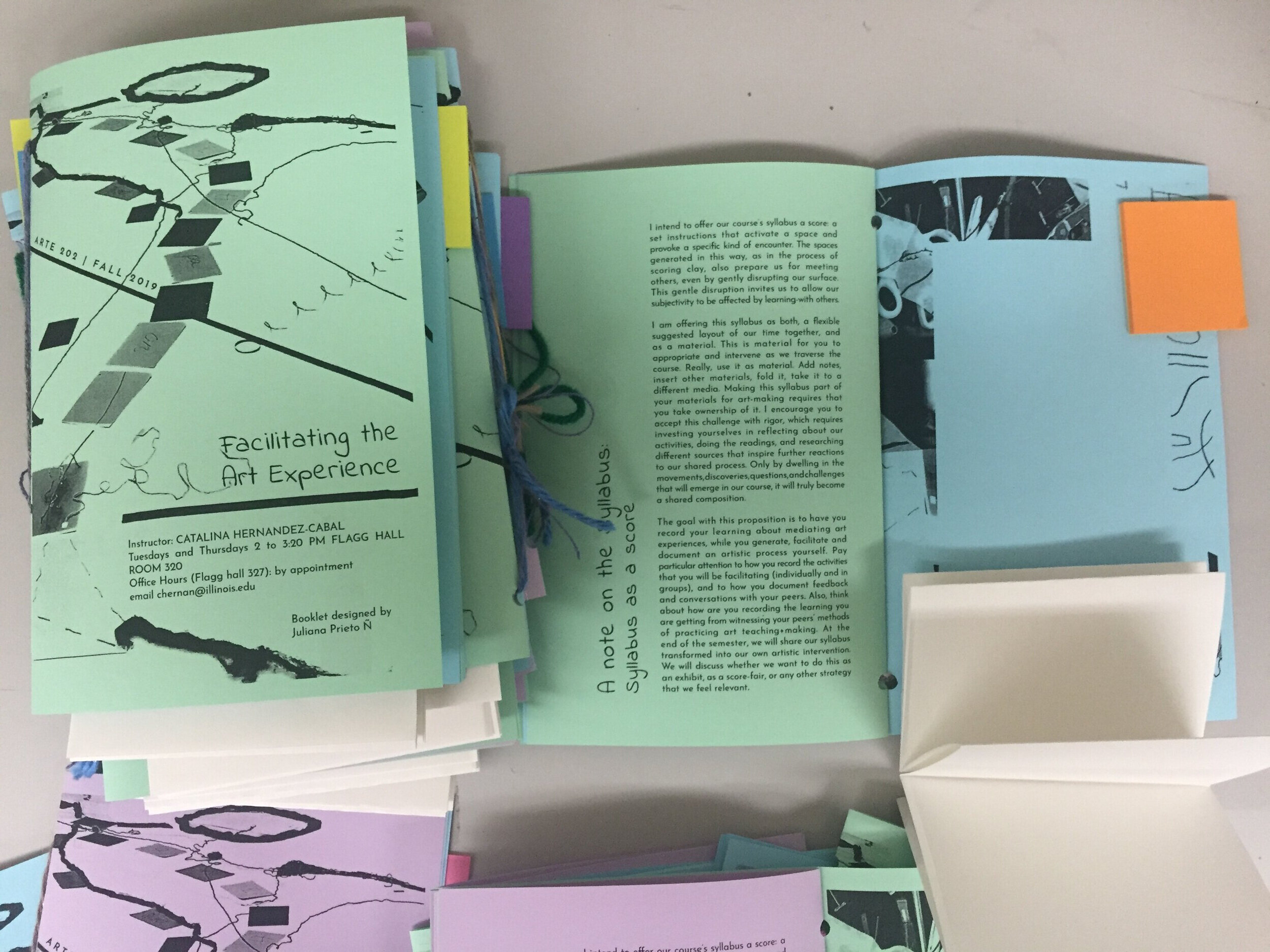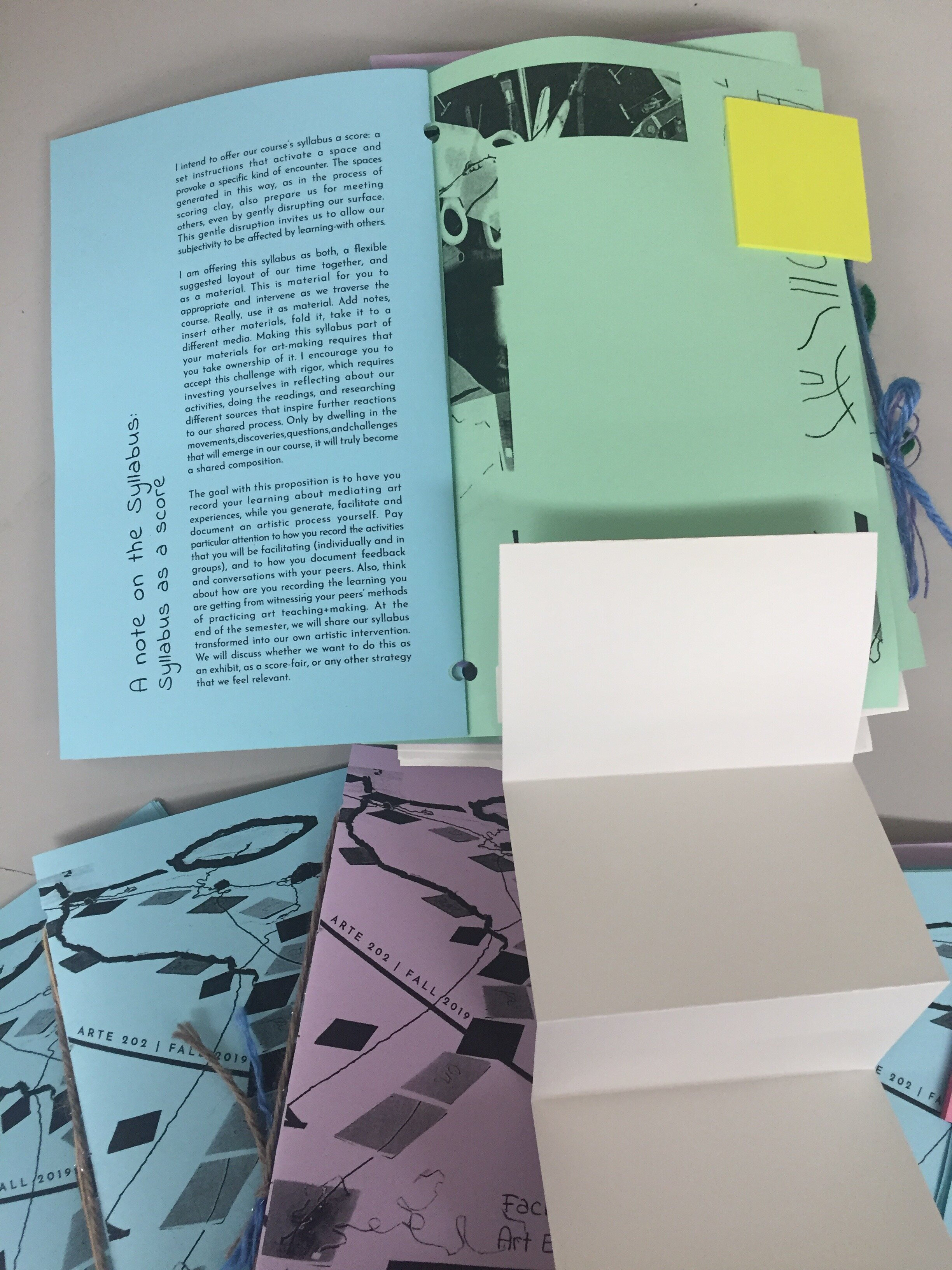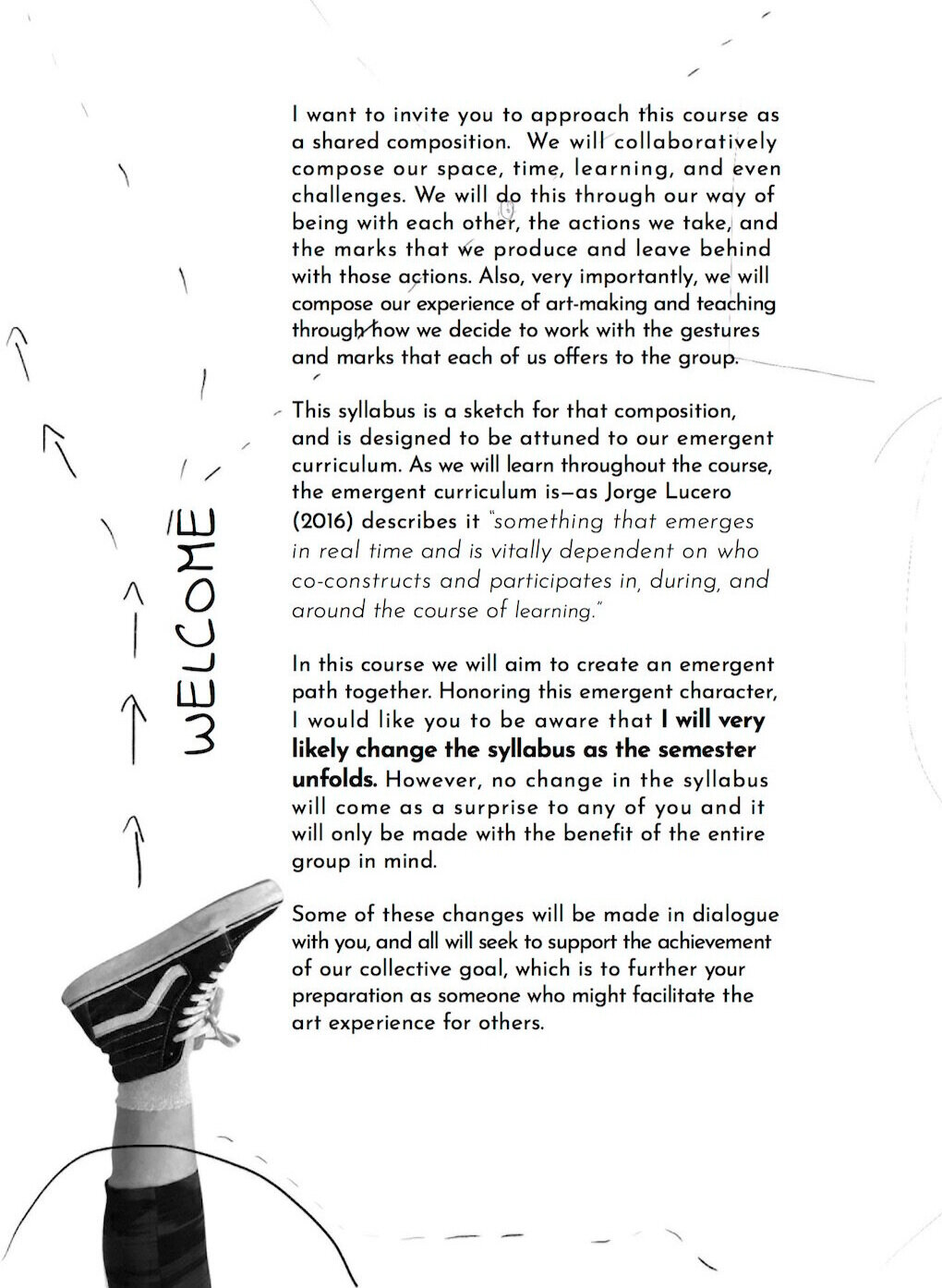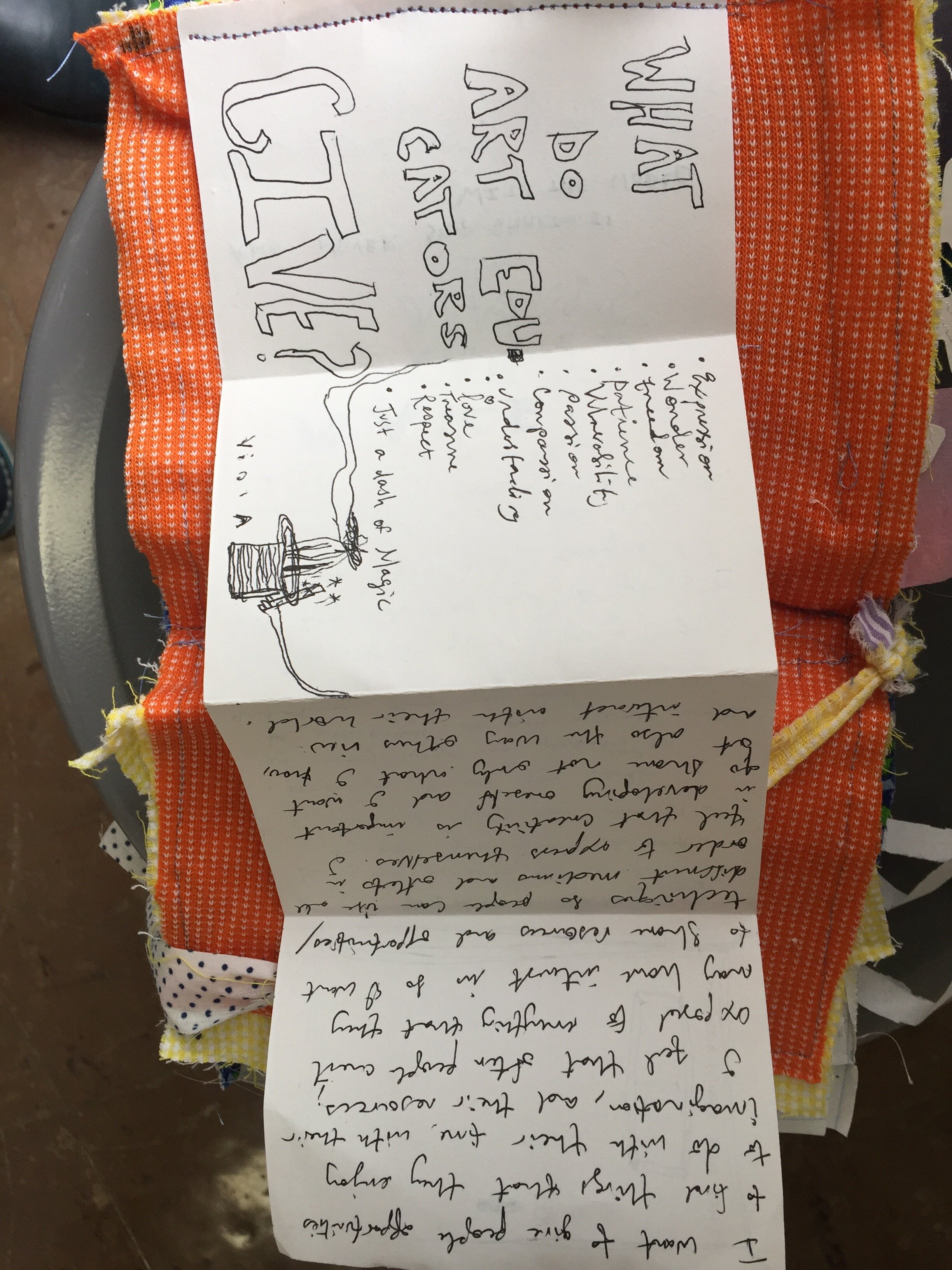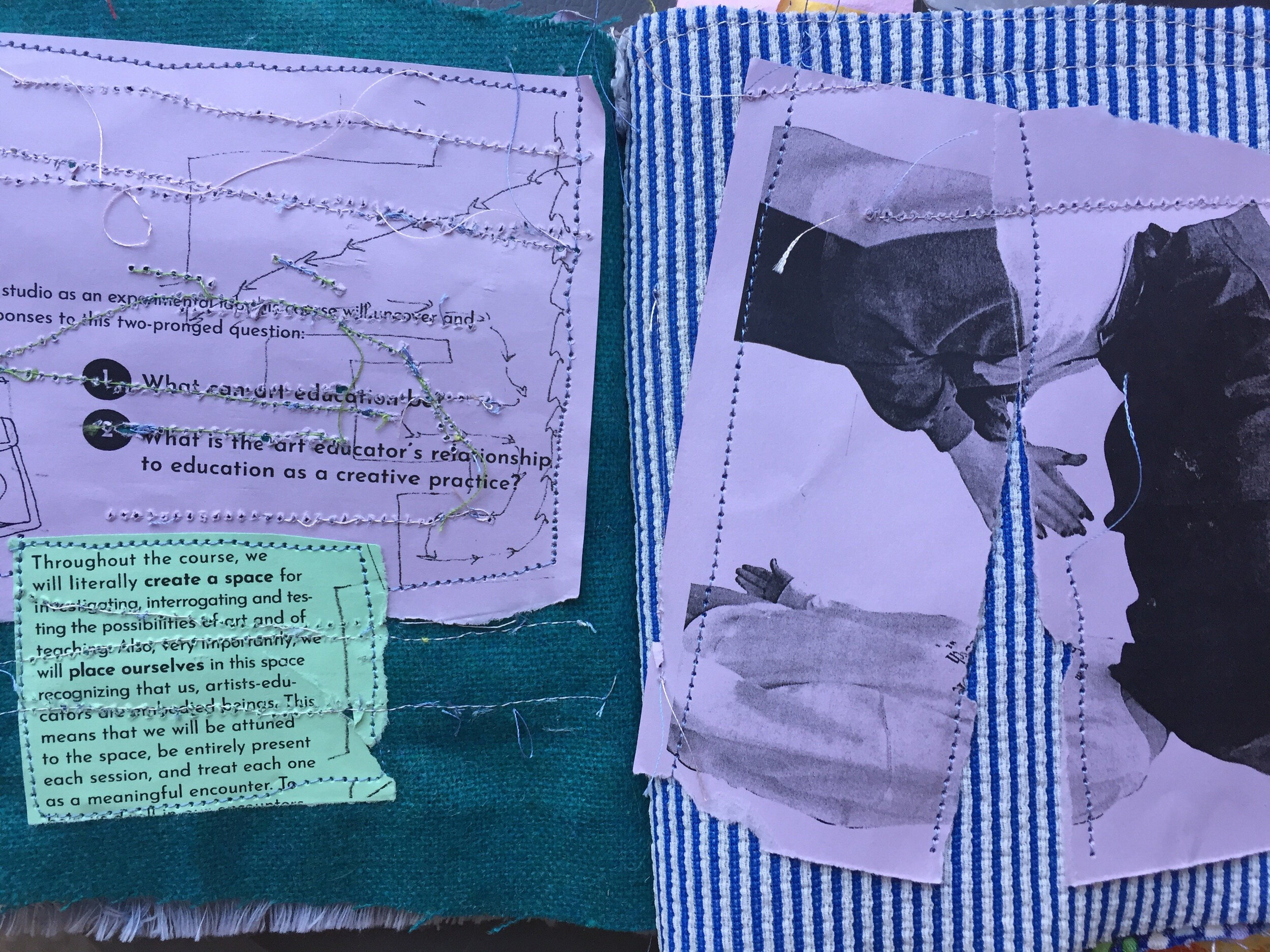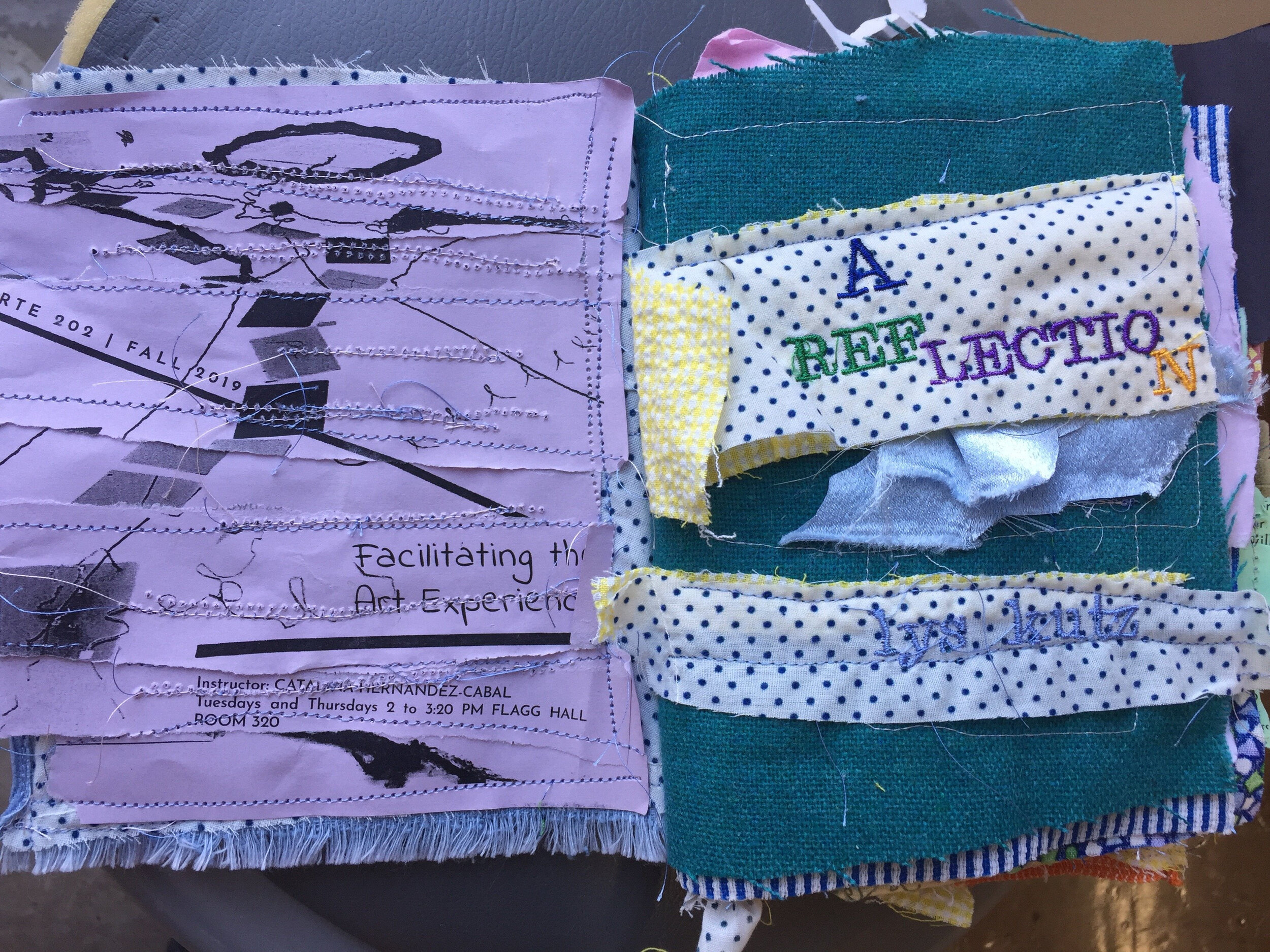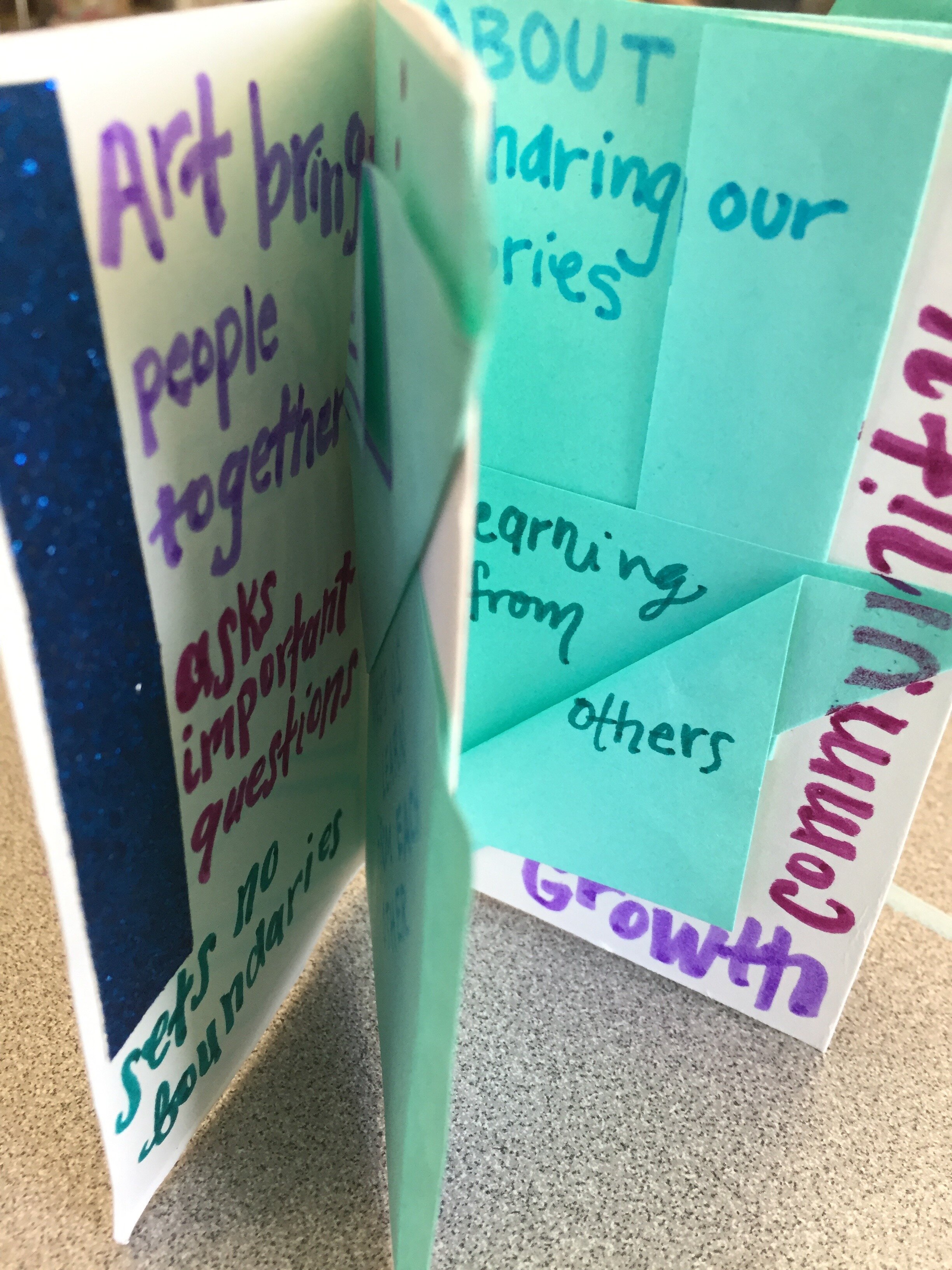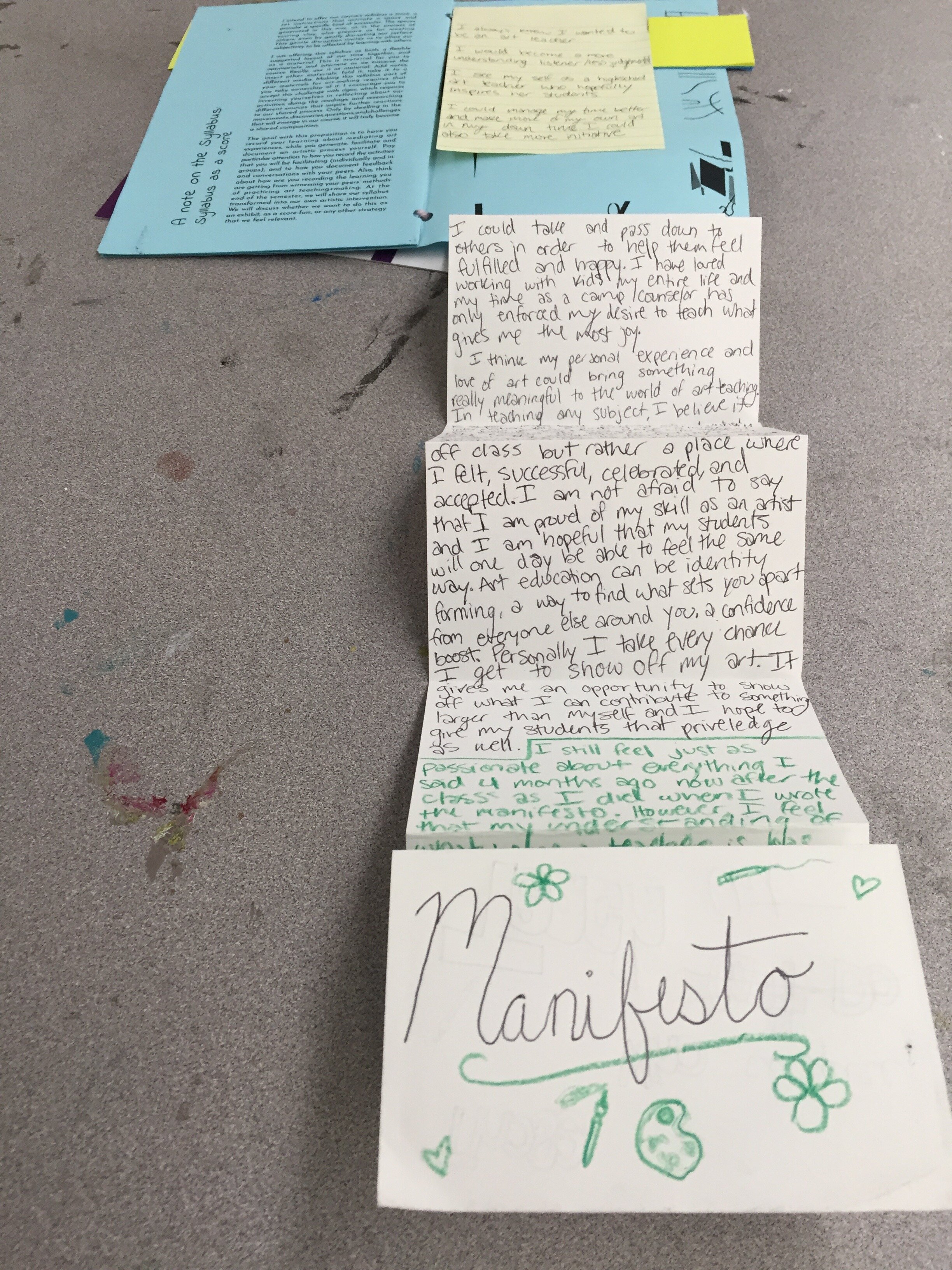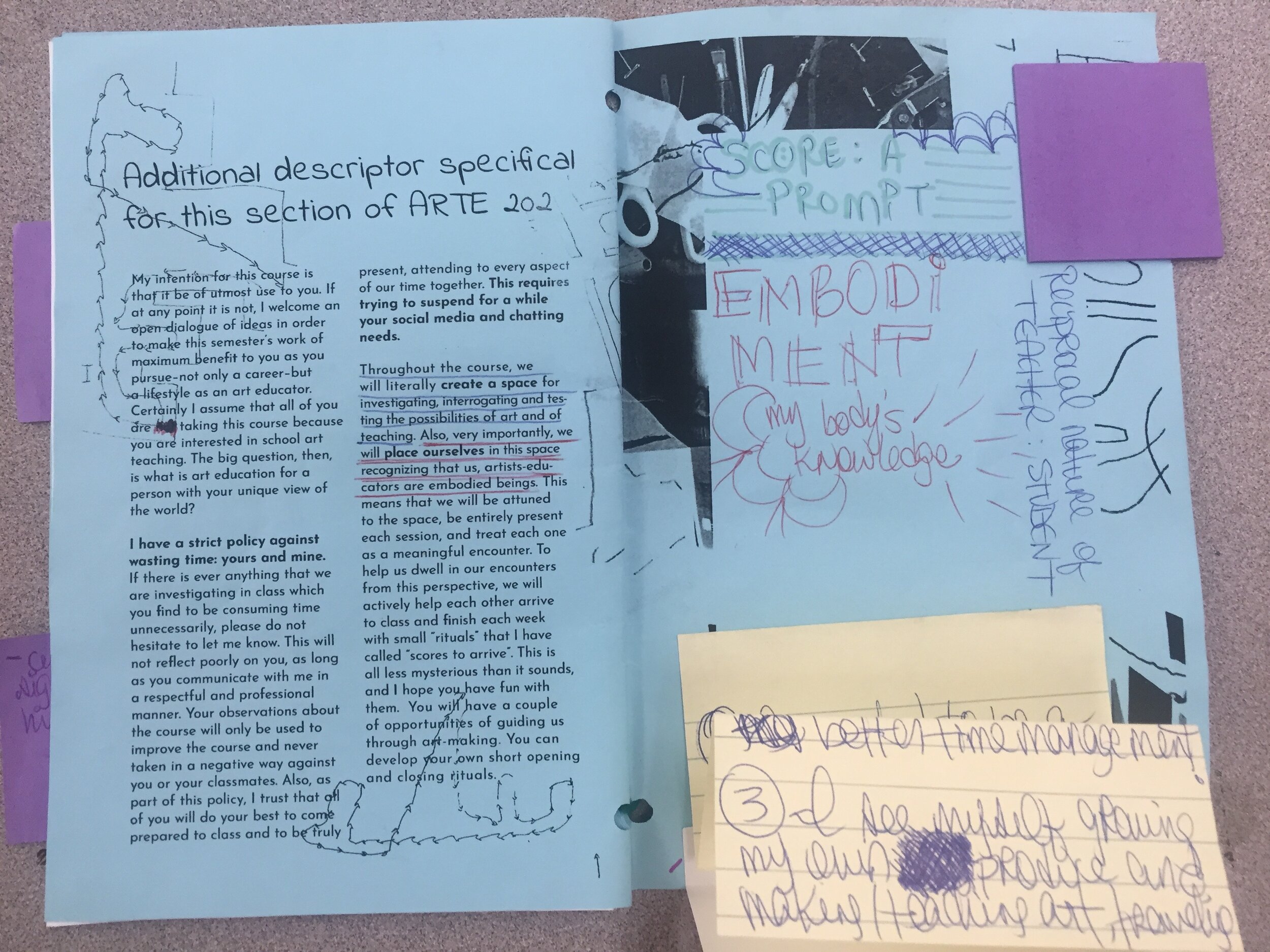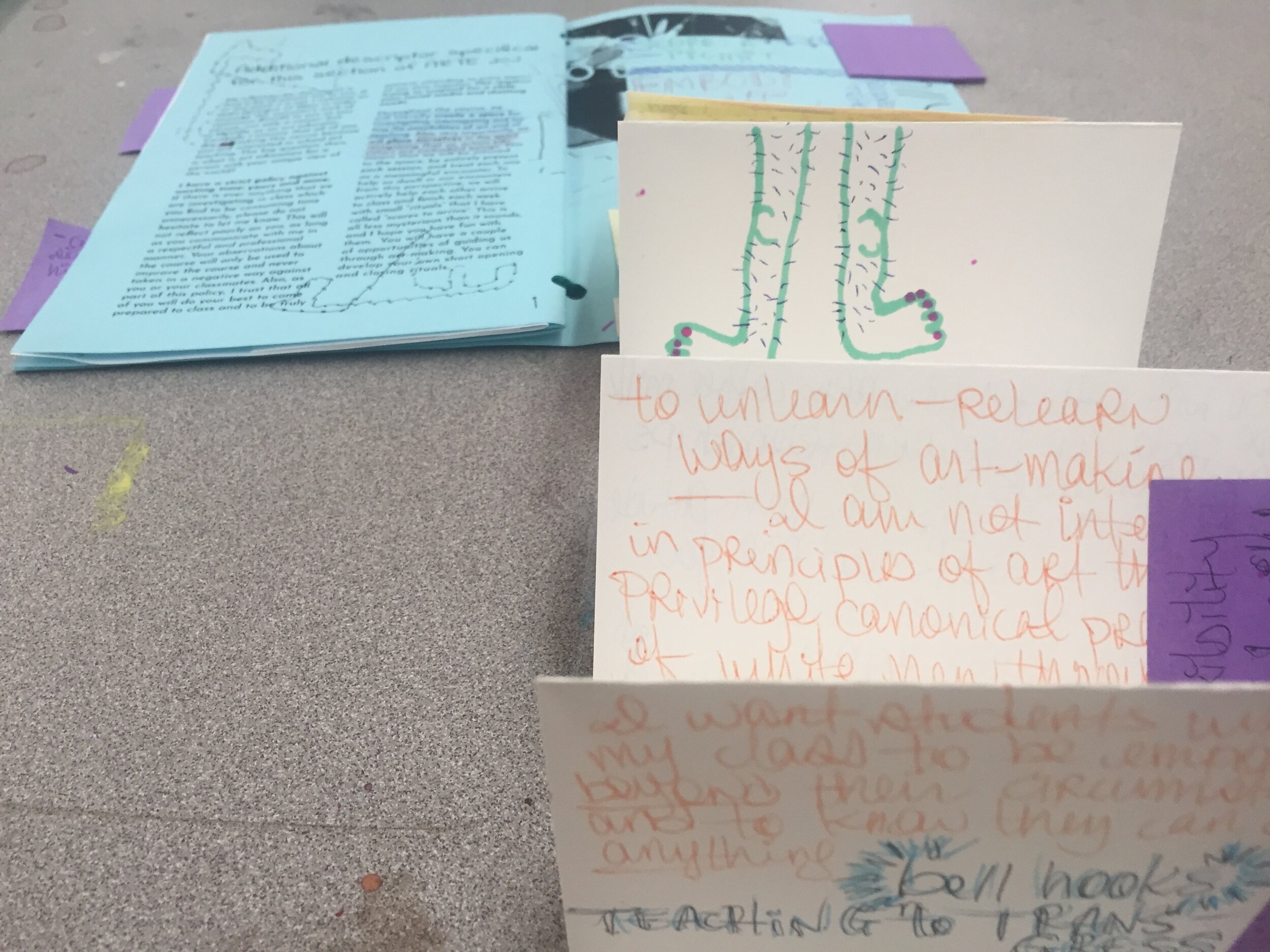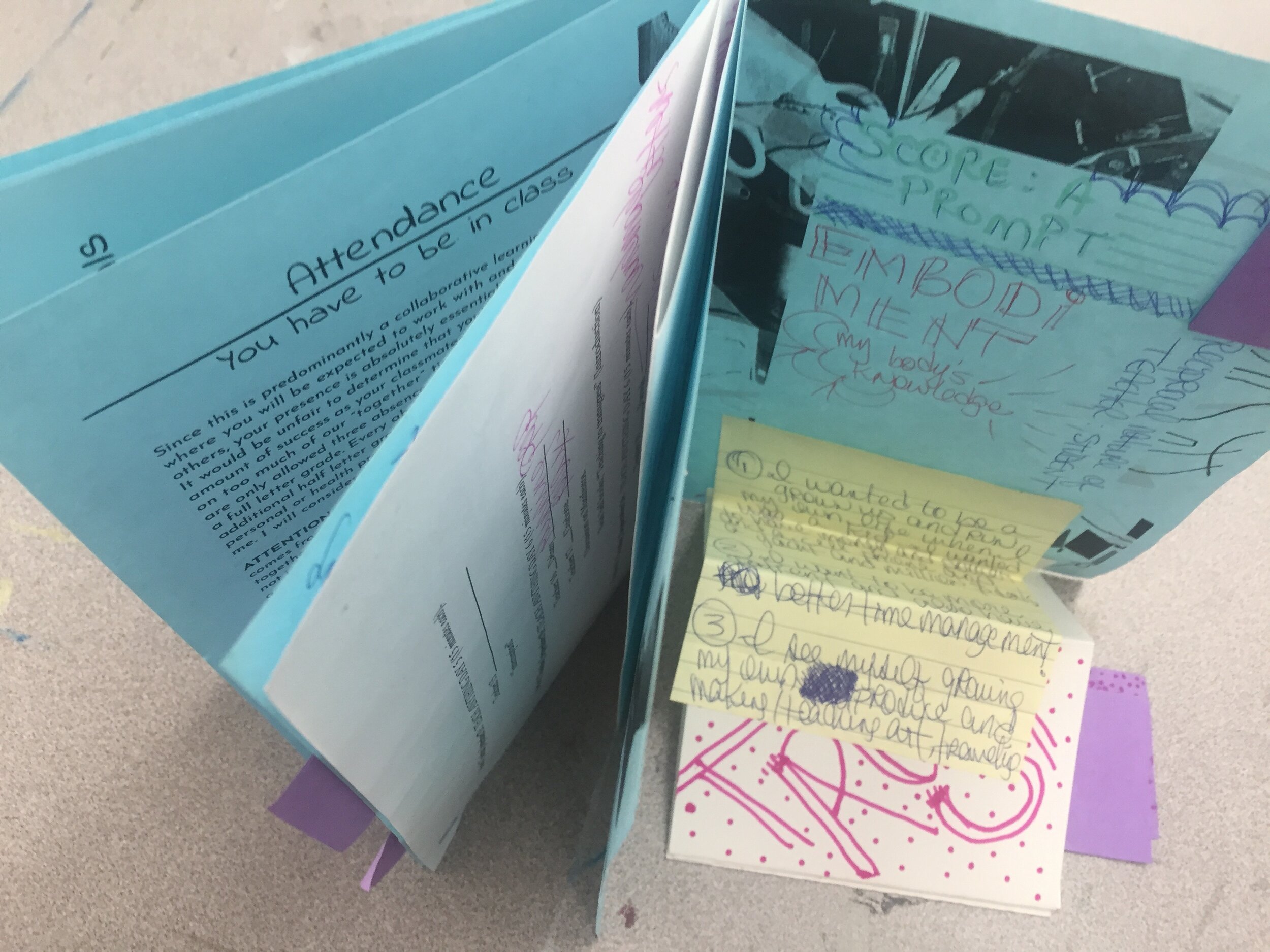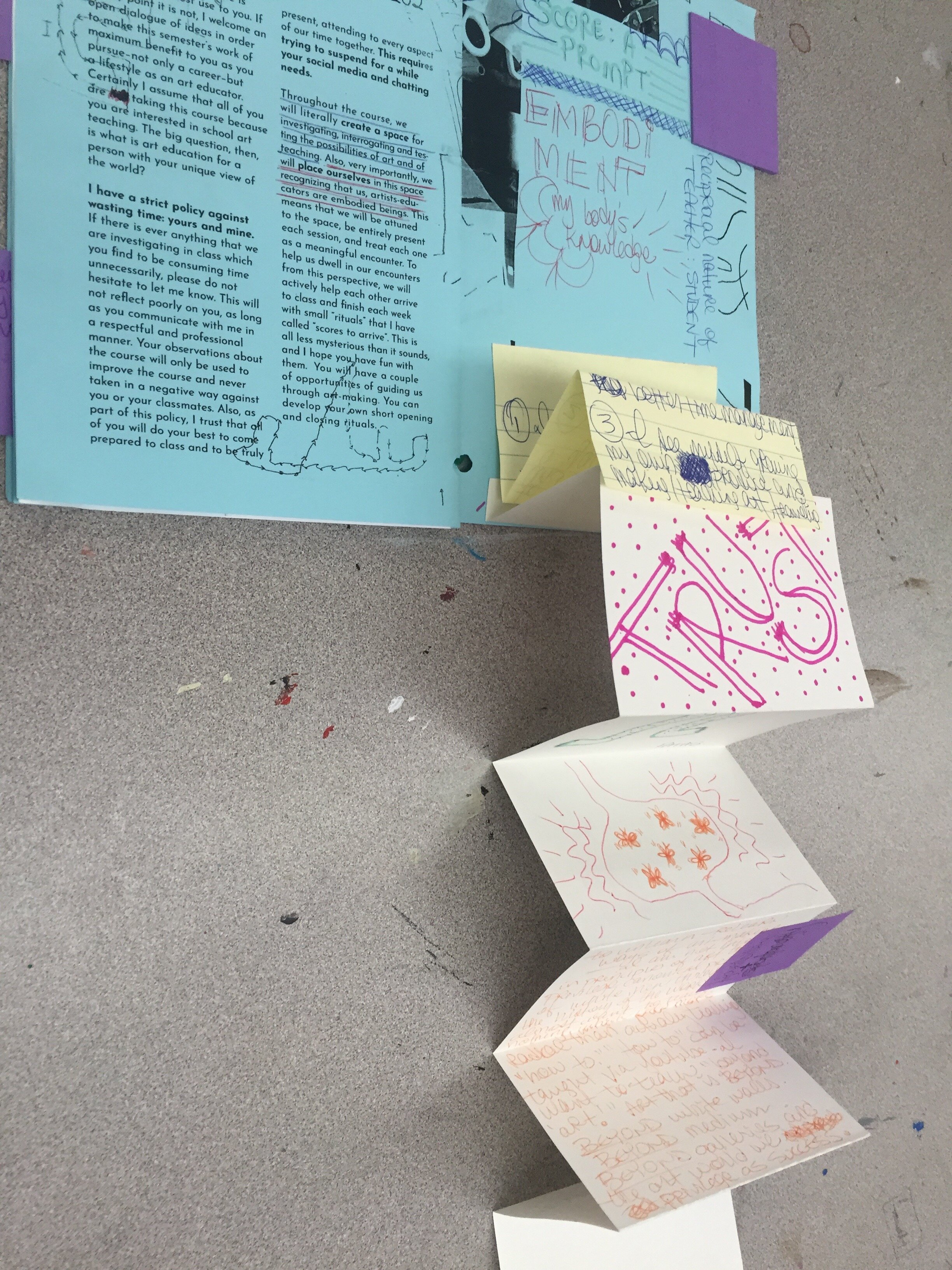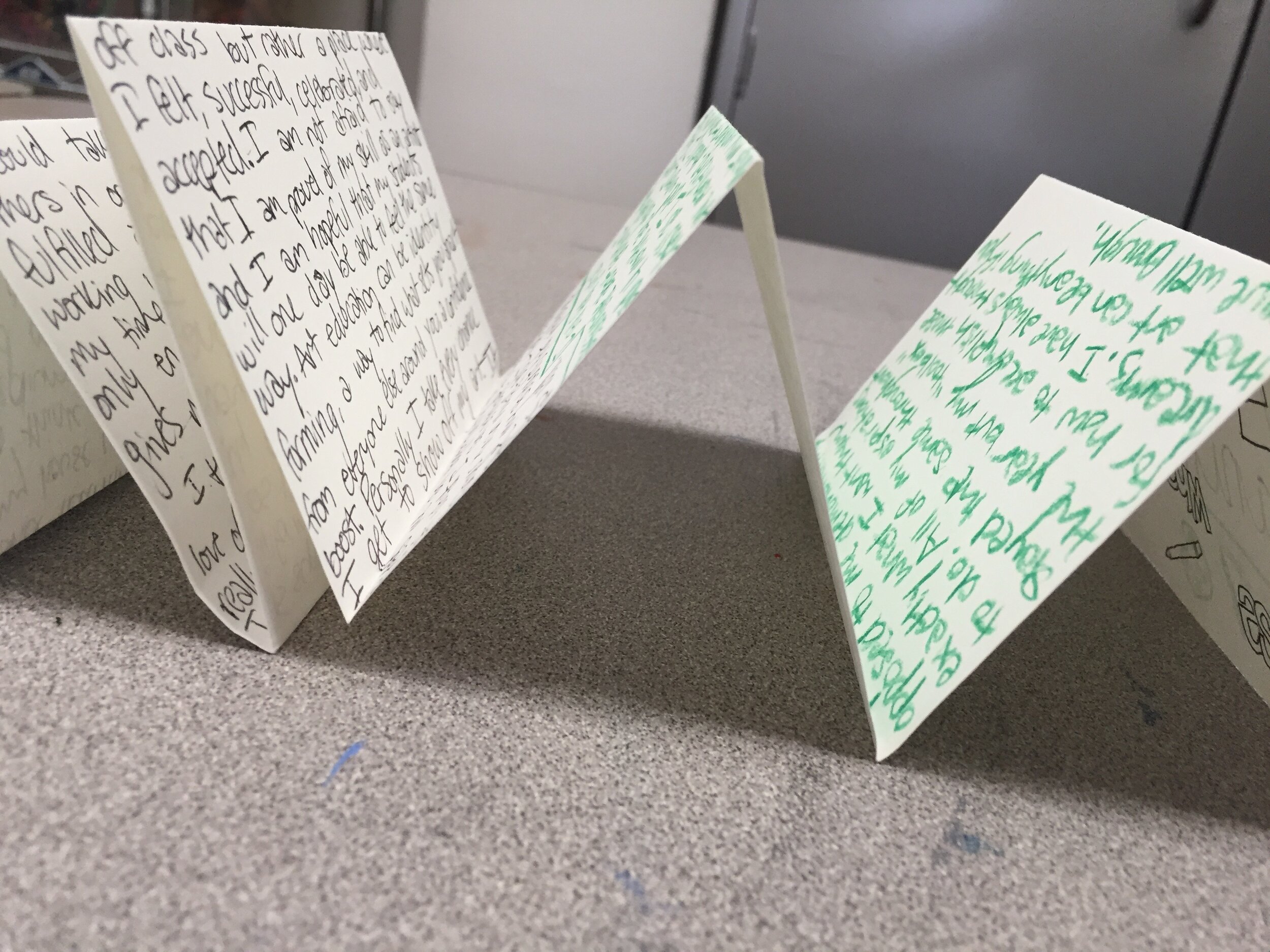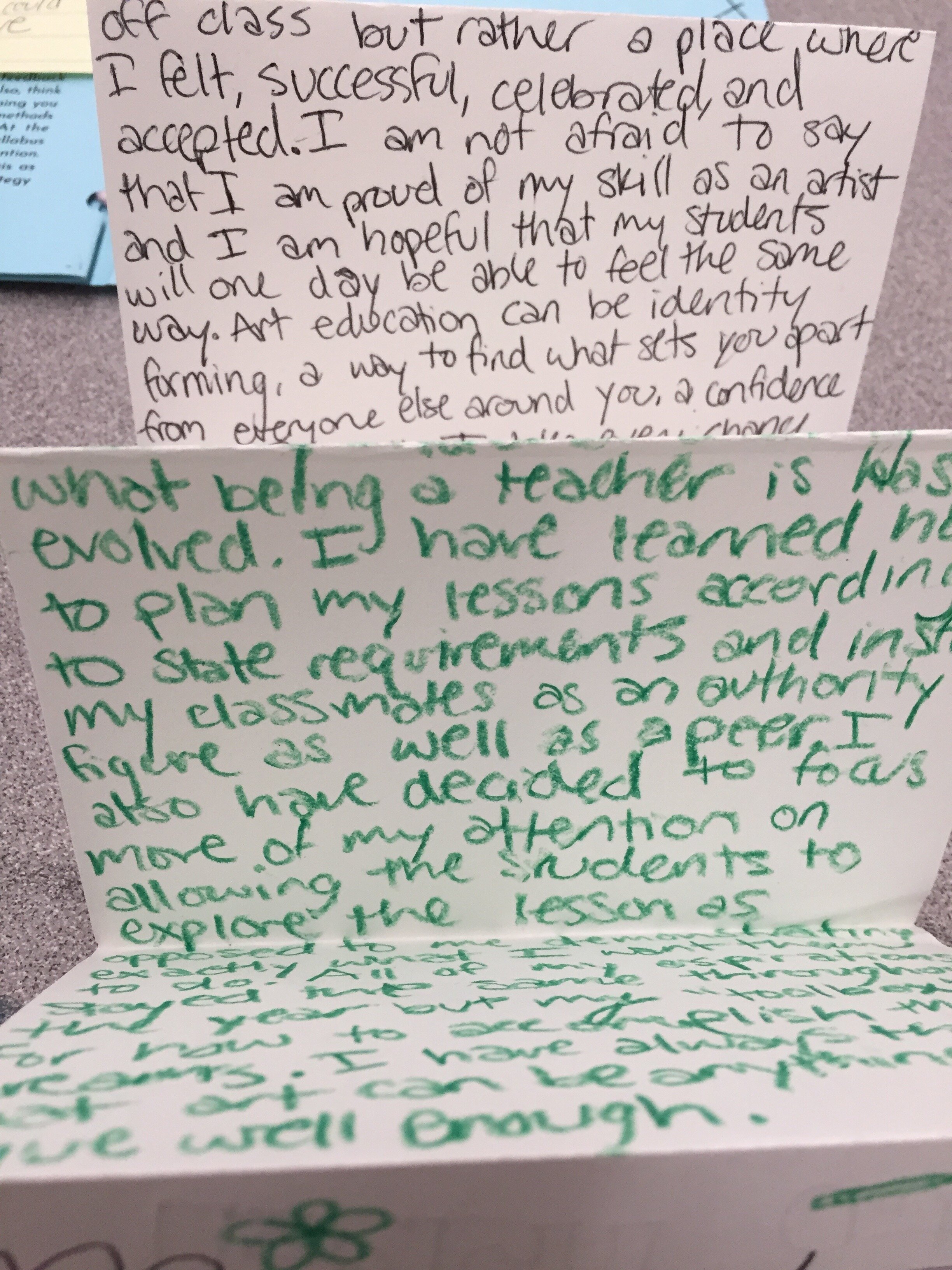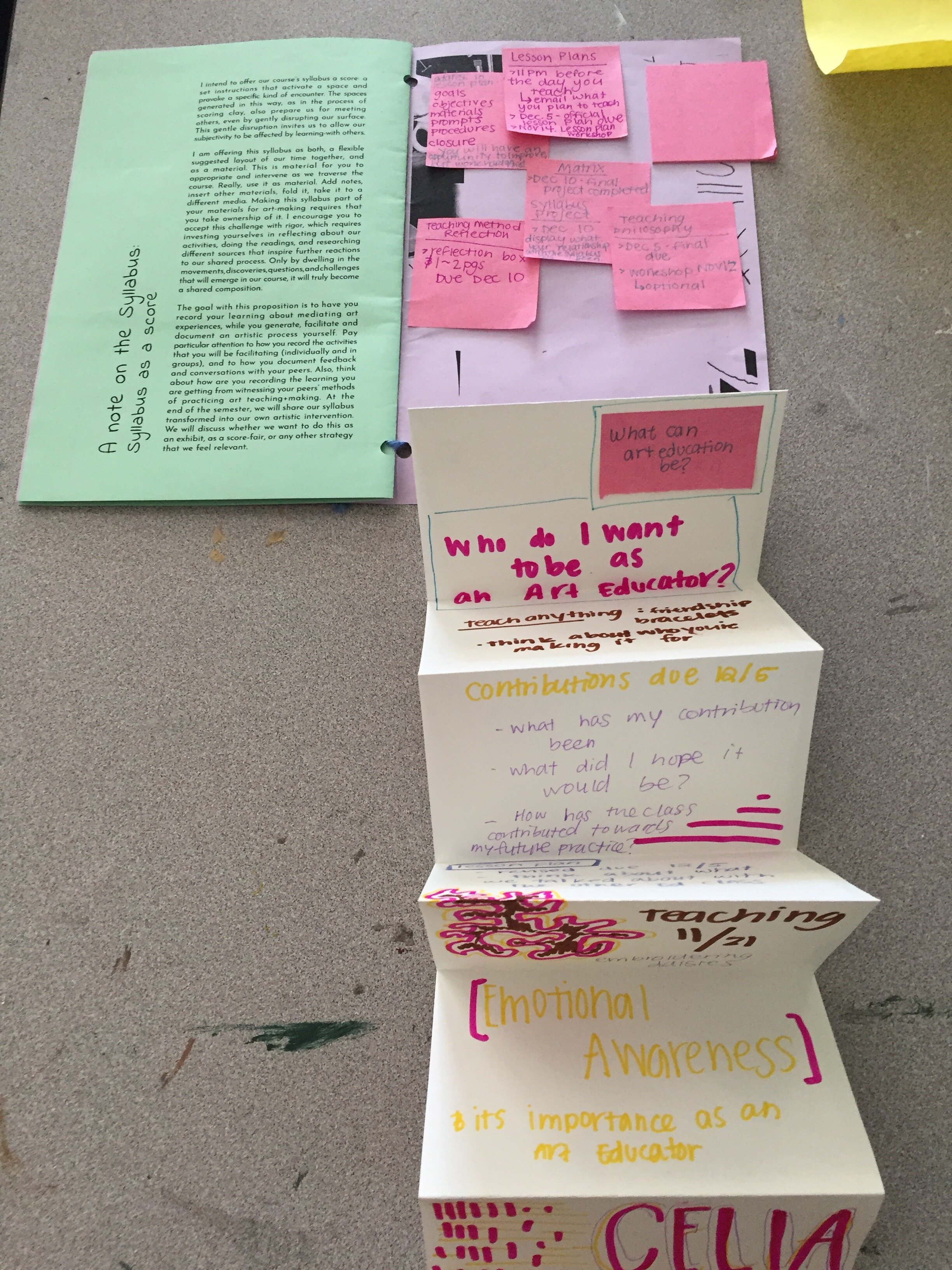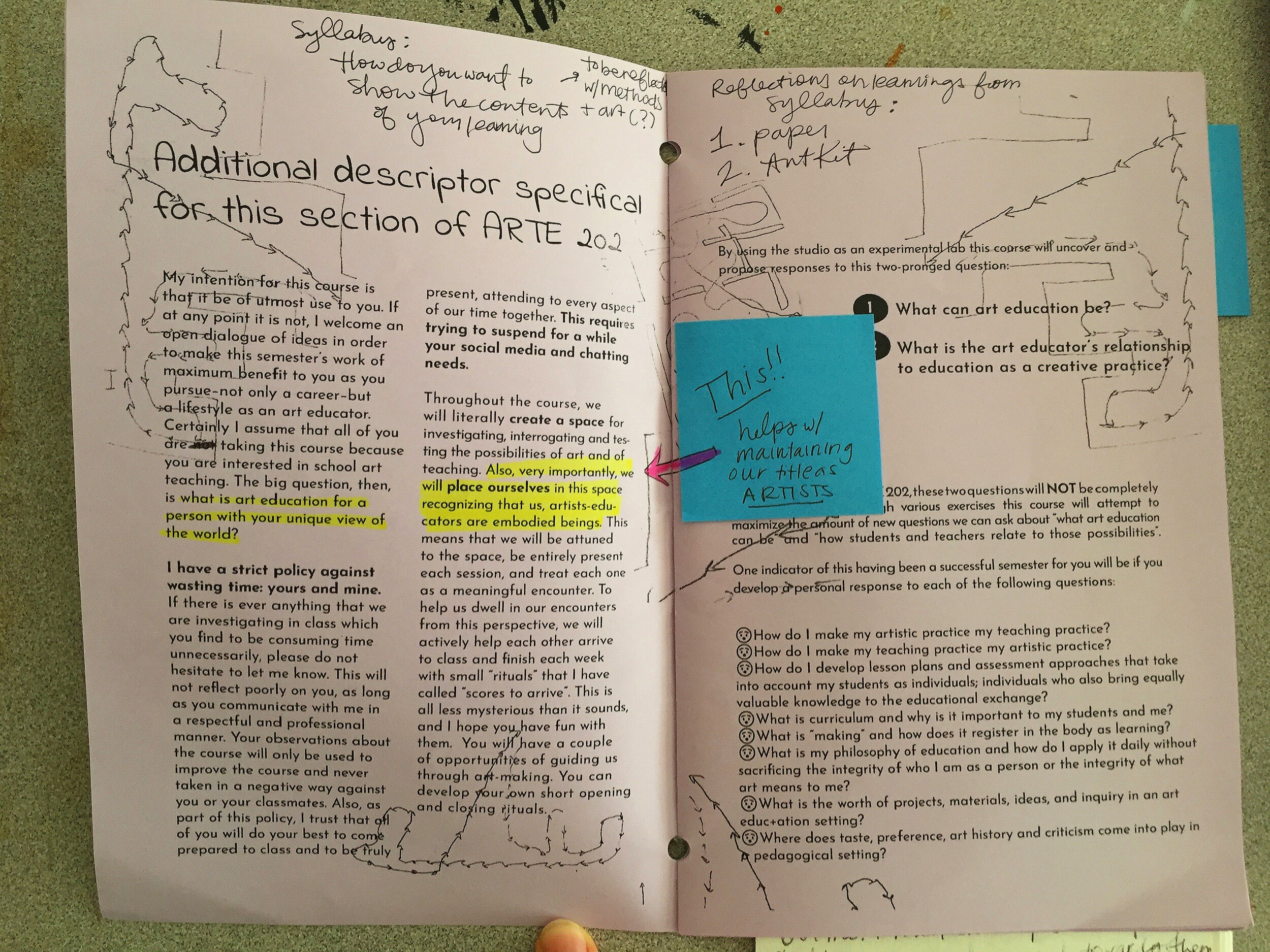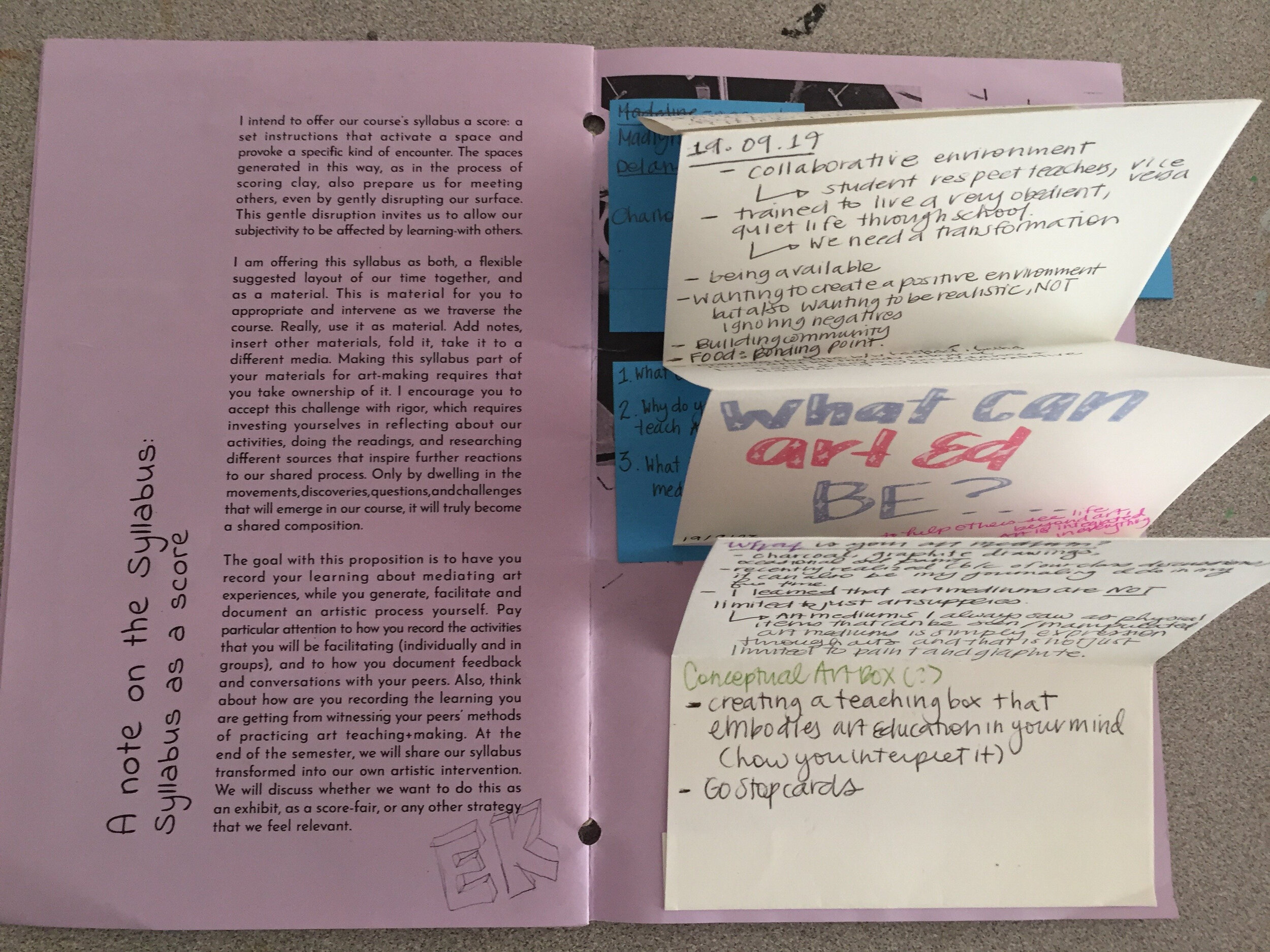This page contains documentation of the course Facilitating the Art Experience (listed as ARTE 202 at the University of Illinois) that I taught in the fall of 2019. What the page documents is difficult to grasp, but includes the main invitation I put forward as the course’s instructor, and students’ interpretations and responses. As all courses (the “running of the course” that William Pinar calls currere), Facilitating the Art Experience had an initial route which, as our shared learning began materializing with time, had twists, turns, variable rhythms and adjustments.
The Syllabus
Here is my initial invitation: a syllabus thought of as a sketch of a collaborative practice. I took time and care in designing the syllabus, to make it an object that students could hold close to record or make marks that somehow reflected something of their path in the course throughout the semester.
The degree to which each student engaged with their individual syllabus varied depending on their own engagement with this invitation, their own practices of note-taking, my variable constancy in generating activities to engage us with the syllabus, and in general the rhythm that generated with our course. Nonetheless, there were a few over-arching questions that we revisited several times during the semester:
What can art education be?
Why do I want to teach art?
What can art education be?… Iteration 1. Student projects
Based on Jorge Lucero’s “Mining contemporary art” assignment, students researched contemporary art and used our form+content analysis as sources to develop their own art teaching activities. Each student developed between 20 and 30 directives of “Form” and 20-30 directives of “Content”. Here are some samples of the directives developed by students. Below, you find the directives the participants chose as ground for their teaching projects.
Activity directives based on contemporary art research:
Teaching activities based on directives
Mosaics, rhythm + pattern
Installation: sound + music
Poster painting + collaboration
Collage-social issues
Portrait and simple materials
Instant photographs intervention, organic-artificial elements
Security boxes, chaos-calmness
Embroidery, emotional awareness + color
What can art education be?… Iteration 2: Syllabus Project—an art show
I invited the group to respond collectively to these question through a final art project that could articulate my invitation to use the syllabus as material, students’ reflection of our learning, and their own art practice. Inspired by the Fluxus Group’s kits of conceptual art, we developed an art-education experience kit that students voted to call “Art Educators’ Survival Kit”. The kit was exhibited alongside other class projects and students’ own work in an exhibited we organized as the final project of the class. The exhibit was called “Resonances of an Arts Encounter”, and was on view from December 10 - 17th 2019, at Flagg Hall, room 130.
Click here or on the section heading to learn more about this exhibit.
Teach Anything
Based on the assignment “Teach Anything” created by Jorge Lucero, students shared their expertise with their colleagues. “Teach Anything” is an assignment/project where everyone in the class demonstrates and demonstrate that everyone already knows how to teach. Each person taught whatever they want, something they felt they were good at, or something they just wanted to share. Here are some documentation of each student-teacher’s teaching day.
I added this invitation to the activity: “During “Teach Anything” our closing ritual will always involve a generous offering. This offering will be your thoughts about something that your classmates did in their teaching that stuck with you. Please keep in mind that you are offering feedback. NOT making a judgment or an evaluation. This means that you will share your thoughts concerning what you observed your peers did, what “steps” you noticed, and what was effective for you as a learner”.
“What would happen if the body of the teacher would drop her teachy-role and reveal who she was, what she believes in and why? Would she be able to carve out a space where everyone could be encouraged to be who they are? A space to listen, to discuss, to trust, to act? What would we need to be able to create such space? What could we ‘teach’ each other to create such space?”
As a movement artist, I initiated the course inviting students to acknowledge our bodies as part of our collaborative process of experience. The nuance and vulnerability that comes along physical presence and interaction made it hard to bring the body as and element to engage within a visual arts education course. Nonetheless, students were generous, brave and receptive to walk along me, literally in the walking exercises I opened the class with, and figuratively, through the questions, assignments and conversations I brought to class. Therefore, here I also share my initial invitation alongside some of the activities I offered to move on the direction of acknowledging the body in movement as part of our art educational practice. Inspired by the article “The body of a teacher” published at the Nanopolitcs Handbook (2013), we reflected about these questions: “What makes me anxious or uncomfortable in a educational setting?” “What gives me comfort or is pleasurable?”. We shared our responses to these questions by writing them in individual pieces of paper, collecting them and placing them in conversation (see image). My invitation was for all of us to acknowledge the sensibilities that were present in the room, to attend to how those sensibilities affected our way of being in the room and our process of learning, teaching and art-making.
Keeping it present…
I tried to keep in conversation with these sensitive pieces of ourselves by going back to work with that material several times. Our schedule, shyness, and the difficulty to engage with the vulnerable and abstract heaviness of our embodied selves, pushed this project to the margin of the class (literally it stayed in the corner of the room for most of the semester). However, while marginal in the room, this concern was still central in my concerns as artist-educator. So, this page documents and reflects on this challenge. I went back, revisited and interacted with our responses and made that our contribution to our syllabus kit.
